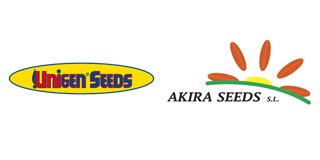
UNIGEN SEEDS SPAIN
Fermentative markers to predict the sensitivity of ?Rocha? pear to browning disorders
?Rocha? pear (Pyrus communis L. cv. Rocha) is susceptible to internal browning although the specific symptoms and rate of development of this disorder have not been clearly established. The aim of this study was then to describe these symptoms and their evolution during storage. Special emphasis was given on the effects of
21 April, 2020
Postharvest, poscosecha, postcosecha, pera, pear, DCA, Atm?sfera din?mica ?Rocha? pear (Pyrus communis L. cv. Rocha) is susceptible to internal browning although the specific symptoms and rate of development of this disorder have not been clearly established. The aim of this study was then to describe these symptoms and their evolution during storage. Special emphasis was given on the effects of storage atmosphere and harvest maturity. Pears were harvested at an early, optimal, and late maturity stages and stored for 4 months at 0 ?C + 3% O2 + 0.5% CO2 (normal CA storage) or 0 ?C + 1% O2 + 10% CO2 (browning inducing CA storage). Internal browning symptoms were classified into two categories: wet necrotic breakdown and dry cavities. After 4 months of storage under normal CA, fruit from the early and optimal harvests did not develop browning, while 25% of the late harvested fruits were affected with an index of ca. 0.1. After 2 months under high CO2, internal browning disorders affected, on average, 90% of the fruit. Late harvested fruits had the highest browning incidence (98%) and index (0.58), while early-harvested fruit and fruit picked at optimal maturity had 90 and 92% incidence and indices of 0.34 and 0.52, respectively. Disorder incidence was positively correlated with increased levels of acetaldehyde and ethanol in late harvested fruits both at harvest and after 2 months of storage, but not with changes in H2O2-scavenging potential (CAT, APX and POX activities). Hence, we proposed to use the fermentative markers to predict the sensitivity of ?Rocha? pear to browning disorders. Original title, list of autors and sources: Internal browning disorders during storage of ?Rocha? pear: effects of harvest maturity and CO2 partial pressure T. Deuchande1, F. Fidalgo2, C. Larrigaudi?re3 and D. P. F. Almeida1,41 CBQF, Escola Superior de Biotecnologia, Universidade Cat?lica Portuguesa, Rua Dr. Ant?nio Bernardino de Almeida 4200-072 Porto, Portugal2 BioFIG ? Center for Biodiversity, Functional and Integrative Genomics, Departamento de Biologia da Faculdade de Ci?ncias da Universidade do Porto, Rua do Campo Alegre, 4169-007 Porto, Portugal3 UdL-IRTA, Postharvest Department, Av. Alcalde Rovira Roure 191, 25198 Lleida, Spain4 Faculdade de Ci?ncias, Universidade do Porto, Rua do Campo Alegre, 4169-007 Porto, PortugalX Simposio Nacional y VII Ib?rico Sobre Maduraci?n y Postcosecha, Spain, Lleida, 1-4 october 2012 The first picture, by coopval.com, shows the growing area of Rocha pear in Portugal; the second picture shows two Rocha pears by masilfrutas.com









